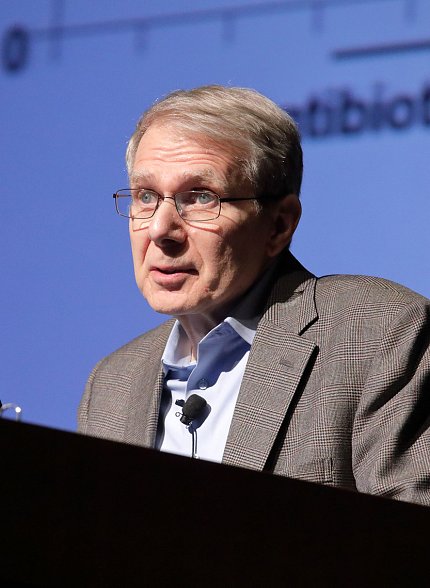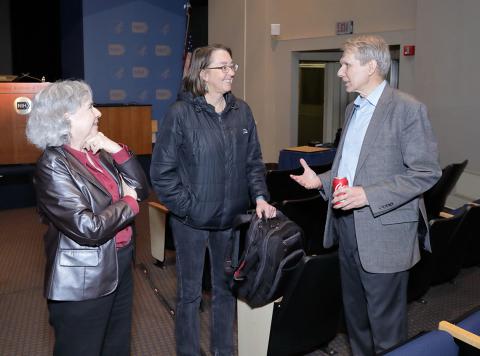‘Persisters’ May Hold Clues to New Antibiotics

Photo: Ernie Branson
It was hard, on Feb. 15 at the Wednesday Afternoon Lecture, to determine what was more unexpected: A man named Dr. Kim Lewis, who spoke with a Russian accent (he grew up in Moscow); his discussion of “the paradox of chronic infections—antibiotics are ineffective against antibiotic-susceptible pathogens”; or a key realization that is enabling Lewis and his colleagues at Northeastern University’s Antimicrobial Discovery Center to find new antibiotics worthy of succeeding the played-out warriors of the Golden Era of antibiotic discovery from 1930 to the early 1960s.
Lewis put the realization this way: “When Mother Nature comes up with a perfect defense [he was referring to so-called persisters—quiescent bacterial cells that survive lethal antibiotics or stresses but are capable of growing again under the right conditions], what we know is that it also provides a response to that perfect defense.”
Lewis and his team have identified two compounds targeting the “Achilles heel of persisters”—lassomycin (so-named because, chemically, it resembles a lasso) and acyldepsipeptide, which has proven effective in mouse models of infection.
He feels sure there are other anti-persister compounds awaiting discovery.
Persisters were first named in 1944 by Dr. Joseph W. Bigger, who published his definition in The Lancet that year; the phenomenon was actually discovered by Gladys Hobby in 1942, when she found that penicillin could kill 99 percent of a streptococcal culture, leaving 1 percent intact. “And then [persisters were] largely forgotten for a couple of decades,” said Lewis.
But the current resistance crisis in medicine, especially in Klebsiella infection and MRSA, is prompting an urgent worldwide search for new antibiotics. As Lewis observed, “You can’t do effective surgery or chemotherapy without antibiotics.”

Photo: Ernie Branson
He and his collaborators set out to characterize persisters and found a general mechanism. He observed, whimsically, “It’s a pretty simple explanation—we could have found this 10 years ago, but didn’t, for reasons that I do not understand.”
Just as bacteria have evolved a plurality of mechanisms for resisting antibiotics (remember that the original Cold War began when living cells, regarding each neighbor with suspicion, evolved ways of defending themselves), the paths to persistence are likewise multiple and redundant, Lewis said.
He called the realm of uncultured cells “microbial dark matter.” And just as dark matter, in physics, must surely explain the universe’s “missing mass” problem, so too may further investigations of uncultured cells yield new medicines that can kill the bad guys and preserve the good ones.
The full talk is available at https://videocast.nih.gov/summary.asp?Live=21817&bhcp=1.—Rich McManus
